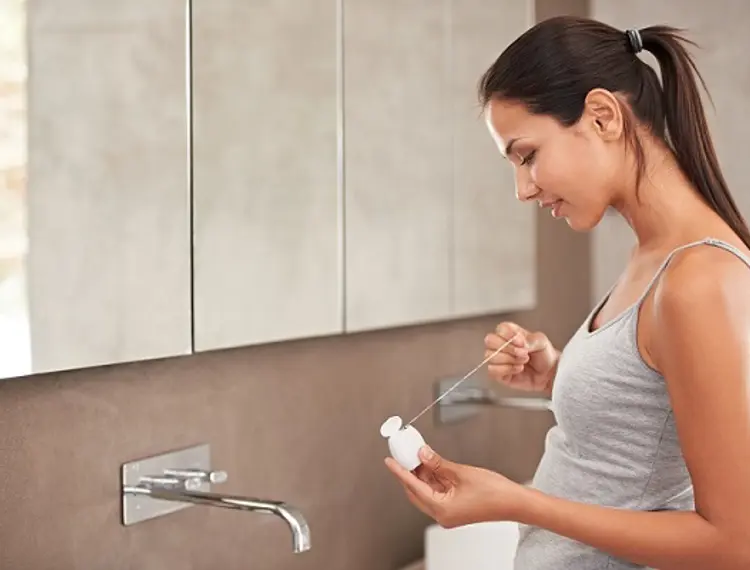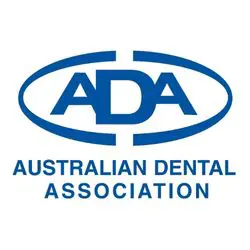
Key messages
- Flossing is the most common method of cleaning between teeth.
- Options to clean between your teeth include string floss, flossettes, interdental brushes and water flossers.
- Not cleaning between your teeth can cause your gums to become inflamed and they may bleed when stimulated by flossing or brushing.
- Do not stop cleaning between your teeth if there is bleeding.
Cleaning between your teeth is known as 'interdental cleaning'. It should be a key part of your daily oral hygiene routine. Both children and adults are recommended to clean between their teeth every day.
Flossing is usually referenced as the main method of cleaning between teeth. This is because flossing has always been the most common method. These days there are many ways to clean between your teeth. Options include:
- string floss
- flossettes
- interdental brushes
- water flossers.
Cleaning between your teeth removes food pieces and bacteria that build up. Not cleaning these spaces may lead to gum disease or tooth decay.

The Australian Dental Association recommends cleaning between your teeth at least once per day. If you have severe gum disease your dentist or specialist may recommend that you clean between your teeth more often.
Cleaning between your teeth before brushing helps to break up the food and bacteria. Brushing can then clean this away.
Cleaning between your teeth may cause your gums to bleed. This is more common if you do not clean between your teeth regularly. Not cleaning away the bacteria can cause your gums to become inflamed. Inflamed gums may bleed when stimulated by items used to clean between your teeth.
Bleeding does not mean you should stop cleaning between your teeth. It may mean that you need to clean more often. Have a check-up with your dentist if you clean between your teeth regularly and your gums keep bleeding. They can make sure there is not another cause for the bleeding.
Remember, healthy gums do not bleed.
Using string floss
It’s important to floss correctly to clear food and plaque away from between your teeth. You can ask your dentist to show you proper flossing techniques.
Tips for using string floss
- Break off about 30 - 45 cm of floss. Wind it around your middle fingers on each hand. Hold the floss so that the string is tight and use your thumbs and index fingers to control it.
- Gently slide the dental floss between the teeth.
- Use a gentle up and down motion to rub the floss along the side of each tooth. The floss will be able to go slightly under the gums to remove the bacteria from this area.
- Remove the used floss and move to the next space. Use a new section of floss or rinse the string on a flossette under running water.
Using flossettes

A dental floss pick or flossette has a handle with a curve at one end that holds a piece of dental floss. These can be helpful for:
- parents flossing children's teeth
- children learning to clean between their own teeth
- adults who have trouble reaching into their mouth
- people who struggle to use string floss.
Tips for using a flossette
- Place the flossette between two teeth.
- Gently press down and use a back-forward motion to move the flossette down between the teeth.
- Gently rub the floss along the side of each tooth.
- Pull the flossette up and out from between the teeth.
- Move on to the next space.
Using interdental brushes

Interdental brushes are an easy-to-use alternative. They look like a tiny bottle brush. These brushes have a short handle with a thin, flexible wire covered in bristles at one end. The brushes come in a range of sizes to help clean spaces of different sizes.
Interdental brushes can be used multiple times before throwing them in the bin. Replace your brush when the bristles look worn, or the wire is bent or twisted.
Interdental brushes can be helpful for:
- people with braces to clean between the teeth and the brackets and wires
- people who have trouble holding and using floss
- people with large spaces between the teeth where floss cannot clean the gap well
- people with severe gum disease
- people who don't like using floss.
How to choose the correct size interdental brush
Interdental brushes come in a range of sizes. The bristles should fit firmly but comfortably between the teeth. You only need to use light pressure to push the brush between your teeth. Do not force it.
The spaces between your teeth can be different sizes so you may need to use more than one brush size. If you don’t know which size interdental brush to use, you can ask your dentist.
Tips for using an interdental brush
Your dentist can show you how to use your interdental brush. Here are some basic tips you can follow:
- Remove the plastic cap from the brush.
- Hold the interdental brush between your thumb and index finger.
- Gently push the brush into the triangle-shaped spaces between the teeth with a gentle twist.
- Push the brush through the space and then pull it back out.
- Rinse the bristles with water after cleaning each space.
- You may need to gently curve the wire to access some spaces, especially back teeth.
- Rinse the bristles and put the cap on when you are finished.
Using water flossers

A water flosser is an irrigation device. It creates a stream of water that is sprayed between your teeth and gums. The water spray removes food, bacteria, and plaque.
Water flossers are helpful for:
- cleaning hard to reach spaces between teeth
- cleaning around dental crowns, braces, and dental implants.
Tips for using a water flosser
- Start from the back teeth and move to the front.
- Select the setting.
- Put the nozzle in your mouth starting at the back teeth and turn on.
- Move the nozzle along the base of the teeth and between them. Keep the tip parallel to your teeth.
- Do not hold the irrigator directly against the teeth.
- Hold the water over each tooth for about two seconds.
- Repeat the process on the inside and outside surfaces until all teeth have been cleaned.
Avoid toothpicks
Toothpicks are not recommended to clean between your teeth. Regular and rough use of toothpicks may damage your gums. The toothpick can also break, splinter, and get stuck in the gums. They can even wear away teeth with long-term use. There are many better options for cleaning between your teeth.


